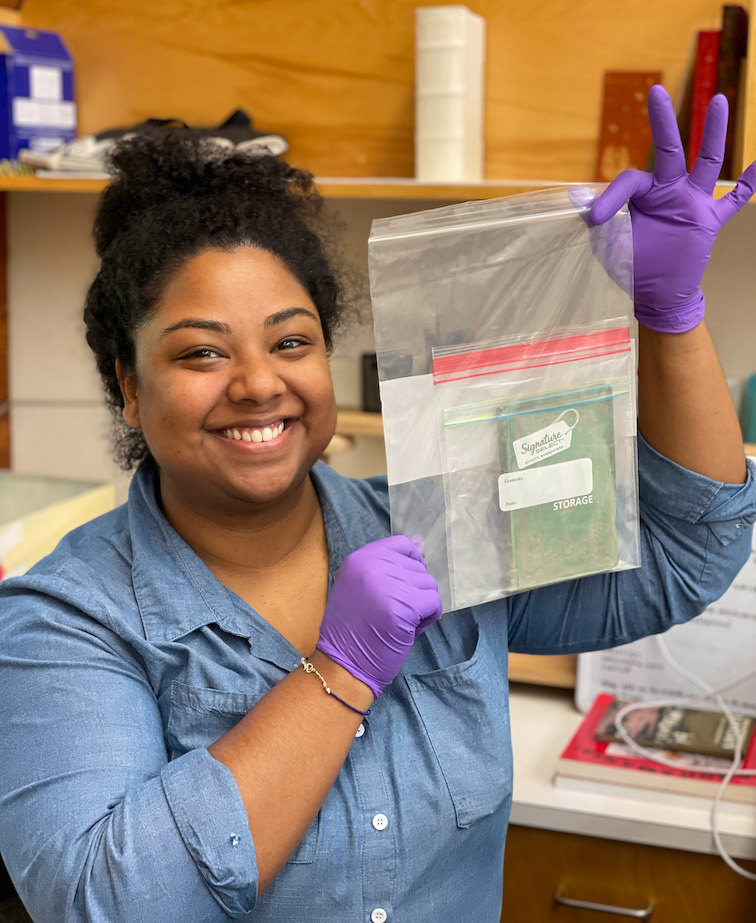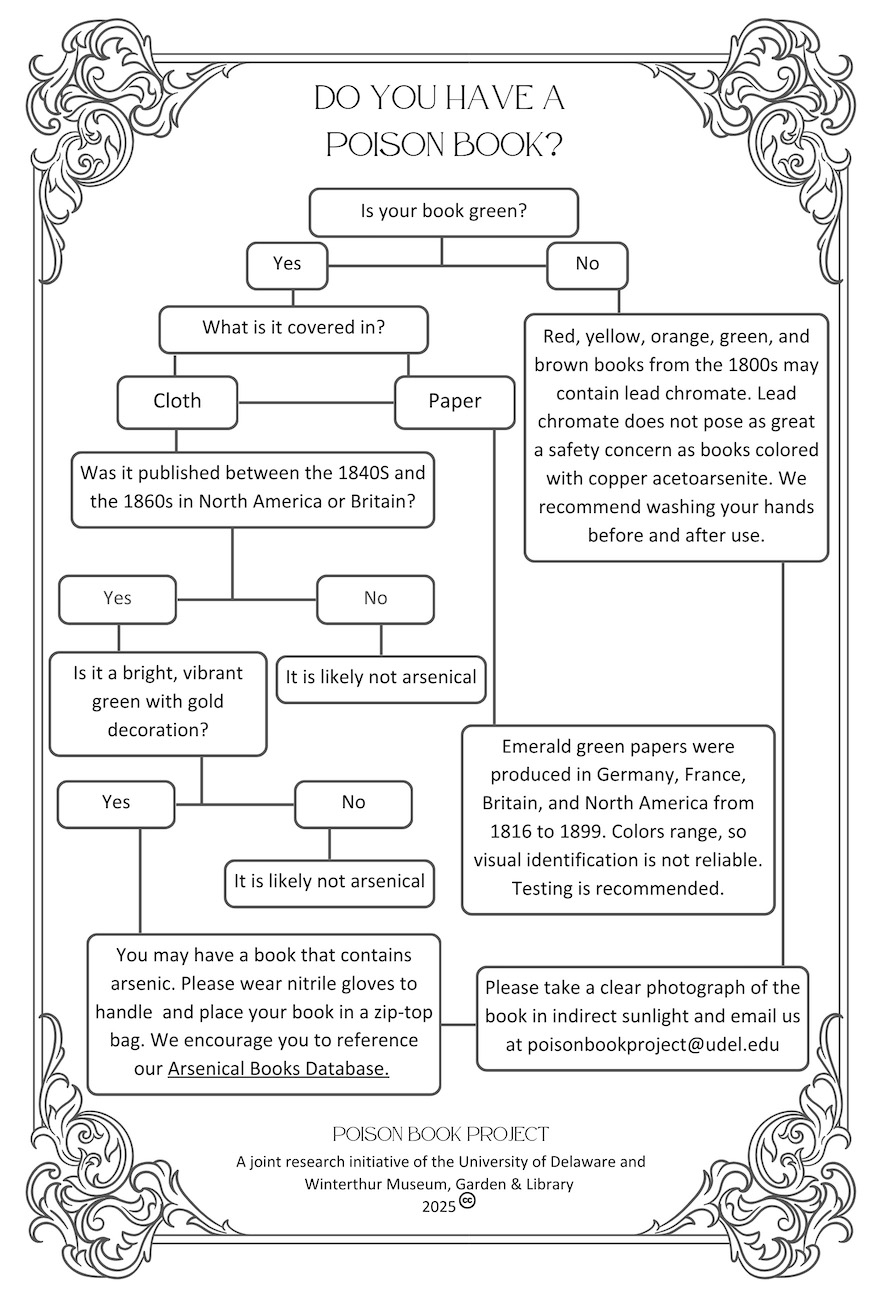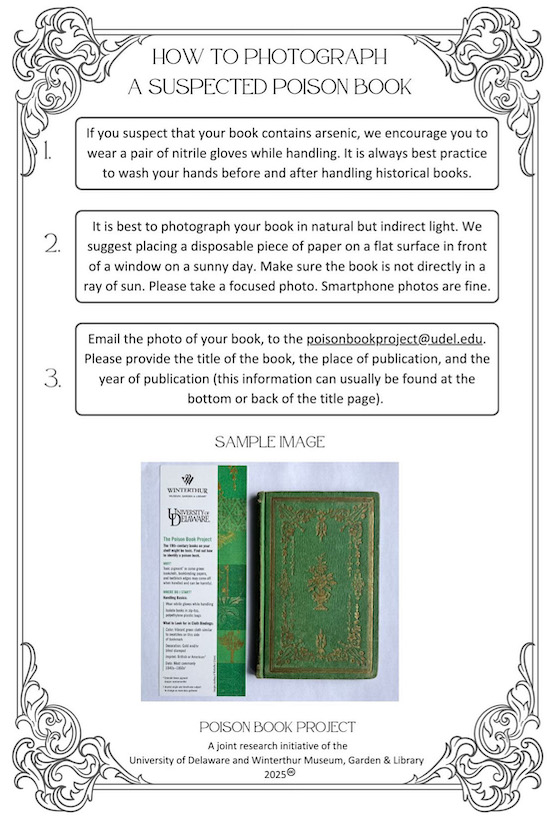
Category: Undergraduate Students
Student Blog: Taking Care of Arsenical Books
May 14, 2025 Written by Brittany Murray
My third-year internship at the Library of Congress has been an incredibly enriching experience, further enhanced by my work done for the Poison Book Project. The Poison Book Project is an ongoing research initiative pioneered by Dr. Melissa Tedone and Dr. Rosie Grayburn, with the goal of educating the public about Victorian-era emerald green bindings. These emerald green books typically feature vivid green bookcloth, heavily decorated with gold or blind stamping, with each volume containing a healthy dose of arsenic. Research has also revealed the presence of other heavy metals in historical bindings that have been tested, including lead and chromium.

As the project has picked up momentum, other institutions have turned an eye to their stacks, and private collectors have turned an eye to their shelves. As one of three Poison Book Project Assistants, I have been tasked with responding to inquiries about identifying emerald green books sent to the project email address, updating the Arsenical Books Database with user submissions, and tracking engagement metrics for the Poison Book project website. I have also designed printable resources for the project, including: (1) a flowchart to help identify arsenical books; (2) instructions on taking a good photograph of suspected books; and (3) a handling safety infographic.
This Assistantship has allowed me to really consider the language that I use when explaining conservation-related topics to members of the general public, and how to approach designing resources that are simple but effective. I am also more familiar than I ever hoped to be with Google Analytics and Wordpress tables. The skills and knowledge that I have gained through this project will allow me to participate in conversations about arsenical books that I may encounter at other institutions and will aid me as I transition into my role as a Book Conservator at the University of Virginia after I graduate. My work would not be possible without the generous support provided by the Nadia Sophie Seiler Fund, whose legacy has made an incredible impact on the library and cultural heritage field.
-Brittany Murray, WUDPAC Class of 2025


